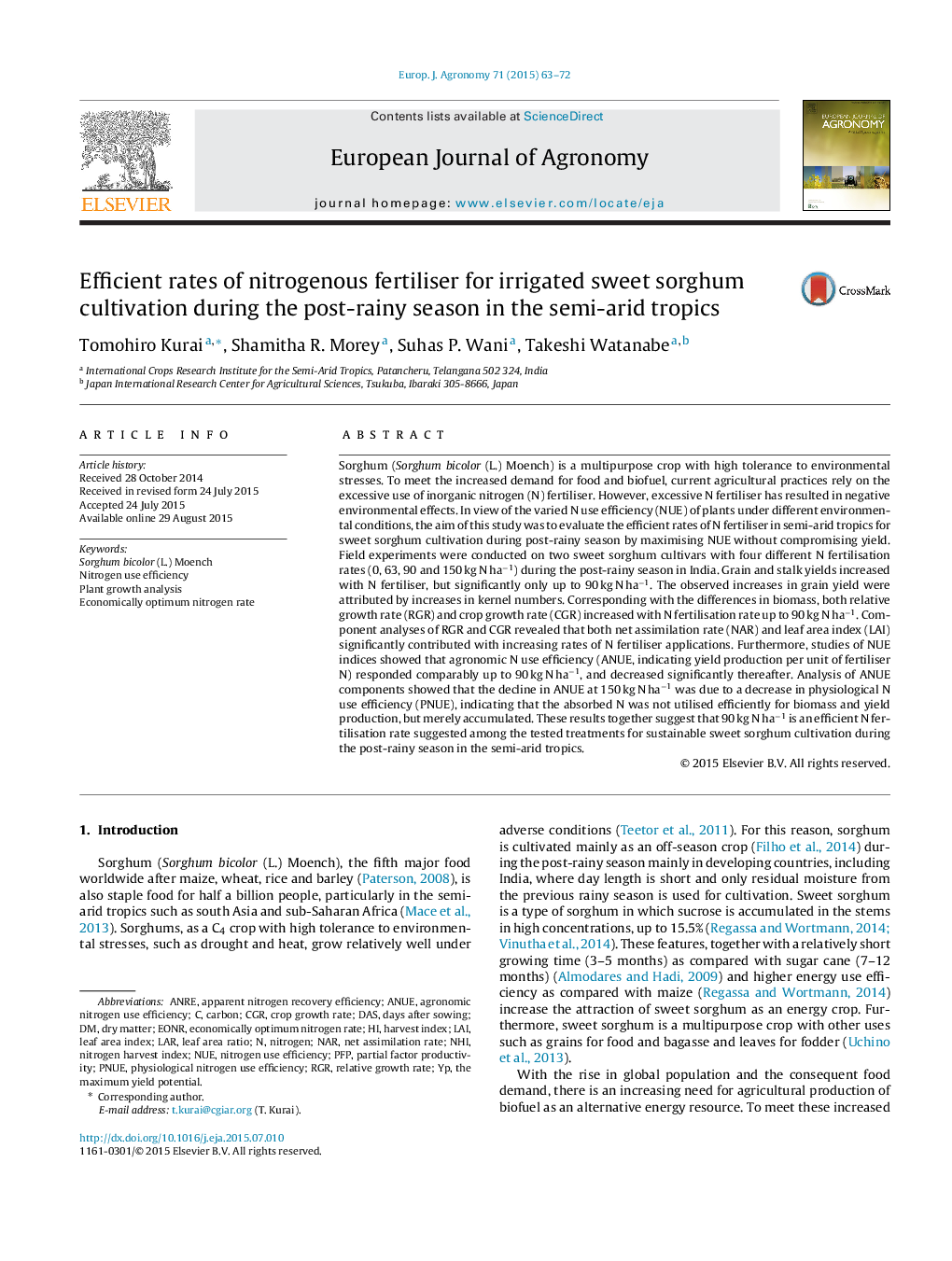| کد مقاله | کد نشریه | سال انتشار | مقاله انگلیسی | نسخه تمام متن |
|---|---|---|---|---|
| 4508747 | 1624454 | 2015 | 10 صفحه PDF | دانلود رایگان |
• Post-rainy season in the semi-arid is not favourable for sweet sorghum cultivation.
• Optimal N fertiliser rates for sweet sorghum in the semi-arid tropics were examined.
• RGR, CGR and corresponding biomass and yield were increased up to 90 kg N ha−1.
• ANUE was maximised at 90 kg N ha−1 due to reduction in PNUE beyond 90 kg N ha−1.
• Total N required for efficient sorghum cultivation was determined as 90 kg N ha−1.
Sorghum (Sorghum bicolor (L.) Moench) is a multipurpose crop with high tolerance to environmental stresses. To meet the increased demand for food and biofuel, current agricultural practices rely on the excessive use of inorganic nitrogen (N) fertiliser. However, excessive N fertiliser has resulted in negative environmental effects. In view of the varied N use efficiency (NUE) of plants under different environmental conditions, the aim of this study was to evaluate the efficient rates of N fertiliser in semi-arid tropics for sweet sorghum cultivation during post-rainy season by maximising NUE without compromising yield. Field experiments were conducted on two sweet sorghum cultivars with four different N fertilisation rates (0, 63, 90 and 150 kg N ha−1) during the post-rainy season in India. Grain and stalk yields increased with N fertiliser, but significantly only up to 90 kg N ha−1. The observed increases in grain yield were attributed by increases in kernel numbers. Corresponding with the differences in biomass, both relative growth rate (RGR) and crop growth rate (CGR) increased with N fertilisation rate up to 90 kg N ha−1. Component analyses of RGR and CGR revealed that both net assimilation rate (NAR) and leaf area index (LAI) significantly contributed with increasing rates of N fertiliser applications. Furthermore, studies of NUE indices showed that agronomic N use efficiency (ANUE, indicating yield production per unit of fertiliser N) responded comparably up to 90 kg N ha−1, and decreased significantly thereafter. Analysis of ANUE components showed that the decline in ANUE at 150 kg N ha−1 was due to a decrease in physiological N use efficiency (PNUE), indicating that the absorbed N was not utilised efficiently for biomass and yield production, but merely accumulated. These results together suggest that 90 kg N ha−1 is an efficient N fertilisation rate suggested among the tested treatments for sustainable sweet sorghum cultivation during the post-rainy season in the semi-arid tropics.
Journal: European Journal of Agronomy - Volume 71, November 2015, Pages 63–72
